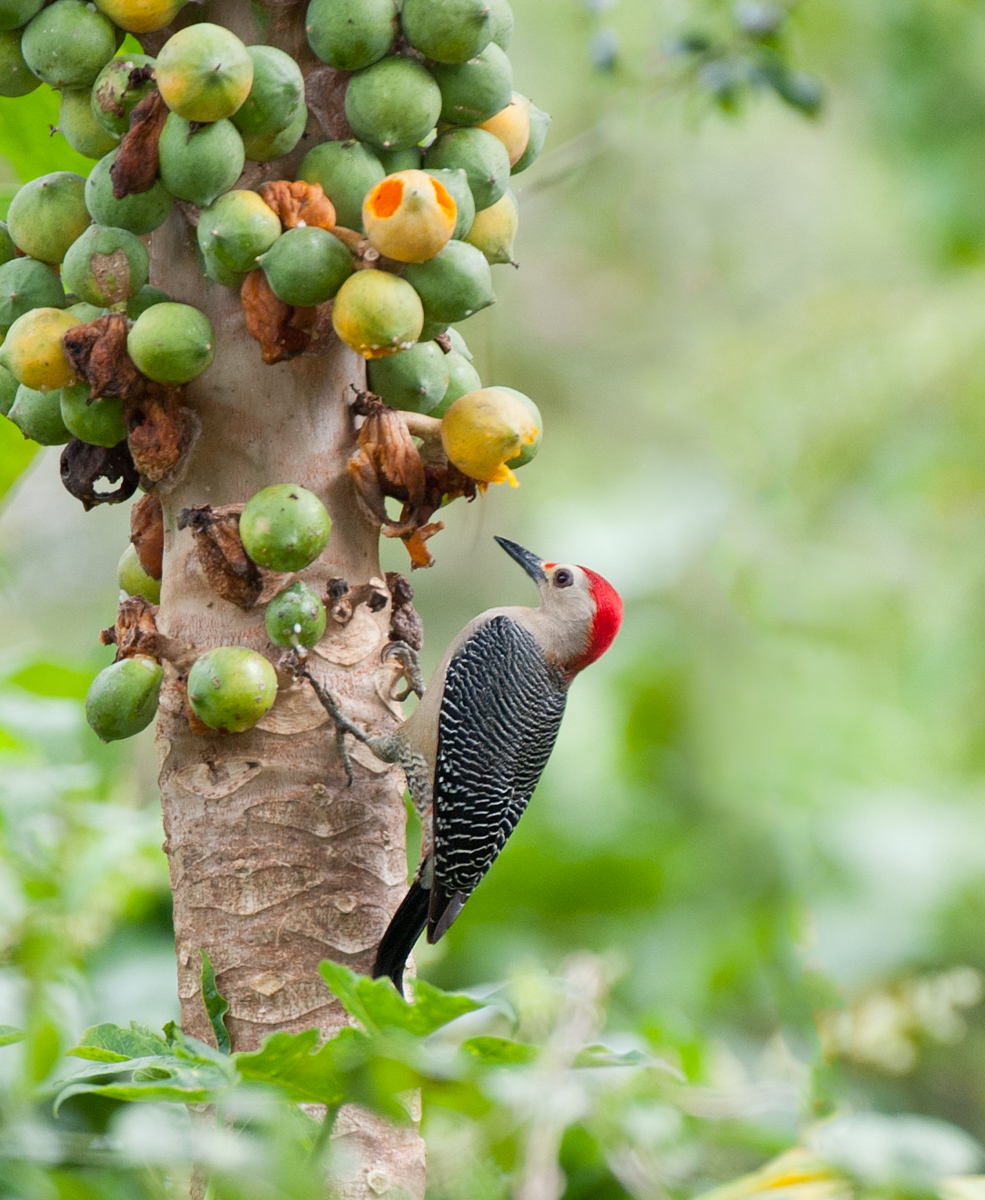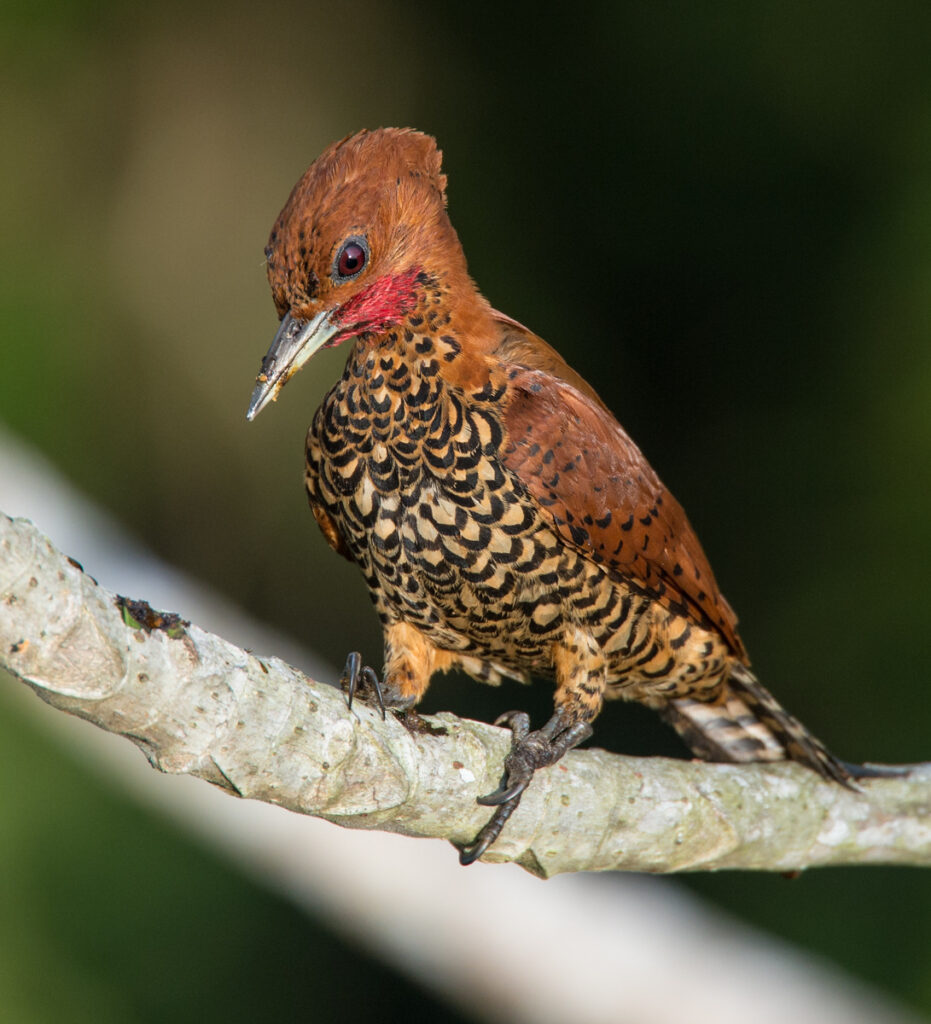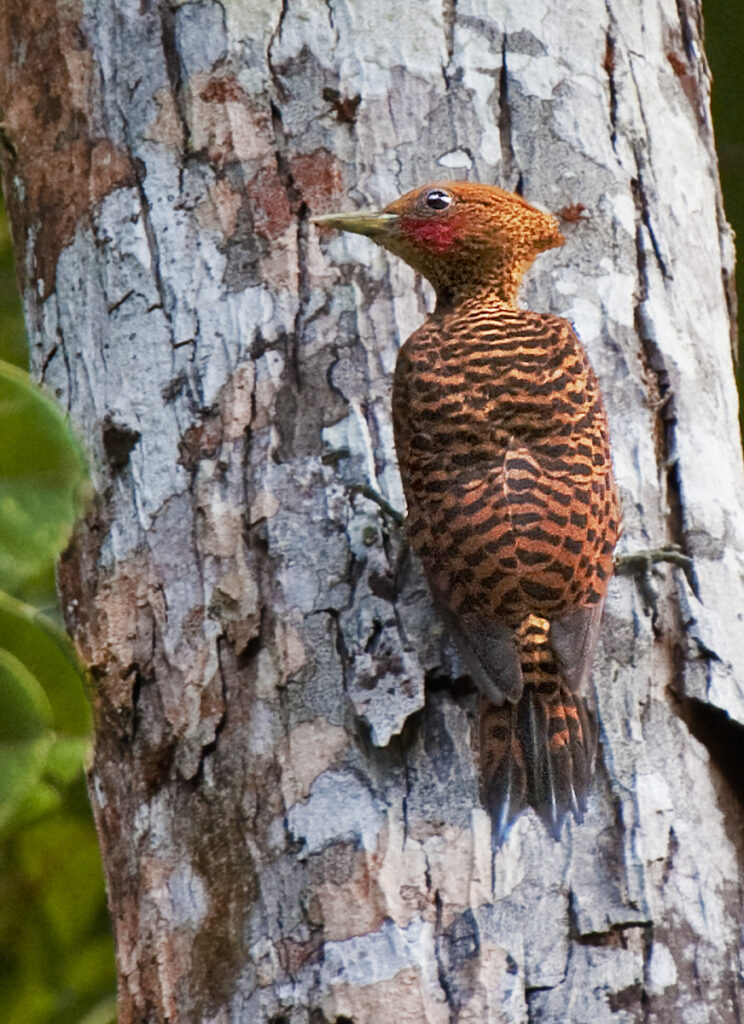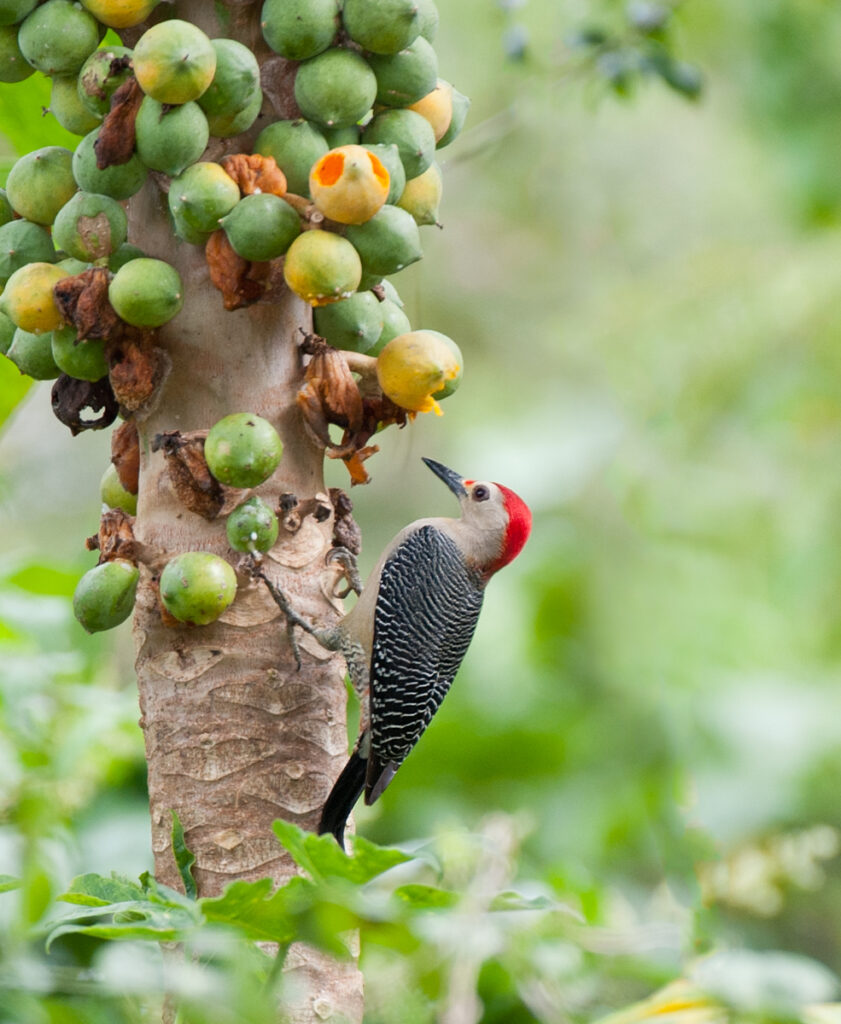
Woodpeckers are the percussionists of the bird world, but their drumming is much more than just noise. If you know why woodpeckers drum and what it means, you can better capture the essence of this amazing activity in your bird photos.
About Woodpecker Drumming
Woodpeckers do more than just poke or peck at different surfaces. Their intricate pattern of beats, which varies in tempo, pattern, rhythm, and length between different species, is also called rapping, tapping, or tattooing. Because woodpeckers don’t produce detailed songs with their vocal cords, their drumming is a method of communication, and it is every bit as unique as melodic songs.
Just like songs, woodpecker drumming patterns claim and advertise a bird’s territory, attract and summon mates, and serve as communication between birds. A louder, bolder drumming pattern signals an individual bird’s health and strength, and woodpeckers seek out more resonant objects for more powerful drumming messages.

Many people associate woodpecker drumming just with trees, hollow logs, or old snags, but these birds actually choose a wide variety of surfaces for making louder patterns that will carry greater distances. Woodpeckers may drum on wooden fence posts and utility poles, but metal surfaces make even sharper noises and offer greater resonances. These birds will eagerly stake out rain gutters, light covers, metal roofs, playground slides, trash cans, transformer boxes, and other metal surfaces for even louder drumming. Higher surfaces – that are more visible and can spread the sound even further – are especially popular.
How Woodpeckers Can Drum
While the bold noise from a woodpecker’s drumming may give us a headache now and then, it’s amazing that the birds themselves do not get headaches from so many forceful impacts. Woodpeckers have special adaptations that protect their heads from harm, including thicker skulls that cushion their brains from percussive drumming. Their bills are also straight and stout to focus the impacts without causing damage that might impair the bird’s ability to eat. Strong neck muscles and upright postures position the birds appropriately for easy drumming, letting woodpeckers engage in this musical mayhem for long periods without difficulty.

Photographing a Woodpecker’s Music
Because woodpecker drumming is so fascinating, it can be a fun activity to capture in bird photography. First, find where a woodpecker is showing off its musical prowess – just listening carefully can help birders and bird photographers find a woodpecker’s favorite drumming spots.
When the bird is sighted, focus on the eye carefully to capture the bird’s intense expression as it drums. A profile shot that is close in on the bird’s head may capture such intimate details as bits or flecks of wood or dust flying about, or may show the bird’s nictitating membrane closed carefully to protect the eye, or the bushy rictal bristles at the base of the bill that protect the bird’s face from dust and debris.
A fast shutter speed and burst mode can be useful to show the most detail, though slower speeds will blur the photo a bit which can add a sense of speed to the drumming behavior. Both types of photography can be beautiful, and showcase the power and intensity of a woodpecker’s actions for greater appreciation of every rhythmic note.




